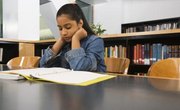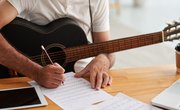Writing is challenging for high school students. At this stage in their academic experience, they are expected to know how to write on-demand to a variety of topics and genres. One such genre is narrative writing in which students become storytellers. Luckily, most high school students can draw from their personal life experiences to create a good narrative.
Narrative Writing
Narrative writing requires that you tell a story. Two categories for narratives are fiction and nonfiction. A fiction narrative can include characters, an omniscient narrator and all parts of a story. Its main purpose is to entertain the reader. A nonfiction narrative tells a personal account from anyone’s life. It’s a true story that can be as entertaining as fiction, but aims to make the reader feel connected to an author’s expression of personal opinions. Writers commonly use first person or third person perspective for both types of narratives.
Paragraph Construction
To construct a paragraph you must focus on a specific topic. In addition to this, you should structure your paragraph to include three basic parts: opening sentences, supporting details, and closing sentences. The opening sentences tell the reader exactly what the topic is, and the supporting details give the reader more information about the topic. The closing sentences sum up the topic by connecting it to ideas that are expressed in the opening sentences.
Literary Devices
Literary devices are a component or style of writing. Their aspects can be found in fiction and nonfiction stories. Some examples of literary devices are metaphors, similes, personification and various parallel structures of sentences. Writers use them to tell a creative story; to convey ideas that will have an impact on the reader. They push readers to not only enjoy a story, but also to think deeply about the author’s message.
High School Level Narrative Paragraph
A high school level narrative paragraph is one that tells either a fabricated or true story. It must comprise the elements of narrative writing, paragraph construction and literary devices. When these elements are present, they capture the interest of readers. They will also help readers relate to events in the story.
Related Articles
References
Resources
Writer Bio
Valerie O'Brien has been an English teacher for grades 6-8 since 2008. O'Brien holds a Master of Science in education from Indiana Universtiy. O'Brien enjoys all things related to writing and is working on her memoir.











